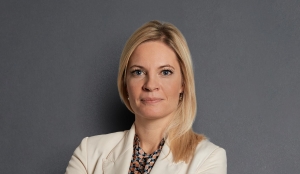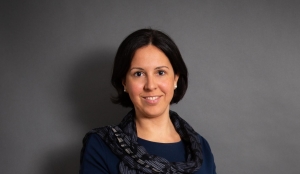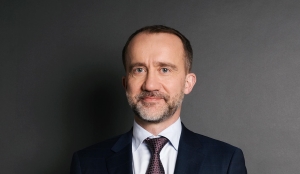A pilot-regime for Market Infrastructures based on Distributed Ledger Technology
The Regulation (EU) 2022/858
The convoluted and deregulated world of cryptocurrencies (already shaken by the Earth-LUNA cryptocurrency affair and now very destabilised by the collapse of the FTX platform) has long been the focus of attention by major policy makers internationally. However, there has been a change in the institutional approach to the phenomenon. We now see a widespread shift in attitude to the urgency needed to address the entire crypto-asset sector to form an effective system of regulation and supervision, to reflect the acquired awareness of its potential and systemic relevance.
On 2 June 2022 the EU gave an initial (albeit targeted) response with Regulation (EU) 2022/858 on a pilot-regime for market infrastructures (offering trading and securities clearing/settlement services) based on distributed ledger technology.
This Regulation, unlike MiCAR, covers certain types of financial instrument tokens (the Regulation will apply as of 23 March 2023, with some exceptions coming into force before that date).
The purpose of the pilot regime is to enable the European Parliament and the Council to consider possible legislative initiatives to be taken or appropriate changes to be made to EU financial services legislation or the end of the pilot regime itself, based on the assessments provided by the European Commission with the support of ESMA's data analysis carried out following the granting of a critical mass of specific authorisations and related exemptions.
The intention of the European co-legislators is to promote the development and deployment of transformative technologies in the financial sector, including the deployment of distributed ledger technologies ('DLT'), while mitigating their risks, and at the same time to extend the entire body of financial regulation to issuers of crypto-assets in the category of financial instruments and to companies that perform financial services for such crypto-assets.
In this transition phase, there is full awareness that the emergence of DLT platforms will require their interaction with traditional securities trading and settlement systems.
Why did the EU legislators adopt a pilot-regime on already densely regulated matters?
The Regulation marks the first step in the experimental construction of the ad hoc market infrastructure regulation for these crypto-assets, implicitly recognising the limits of the approach based on the principle of 'technology neutrality' (i.e., on the axiom of invariance of the application of rules to technological evolution).
The application of innovative technologies to the performance of established activities may lead to a generation of undesirable, unforeseen and unpredictable effects, which should be empirically proven when dealing with very sensitive matters such as finance, which is pervasive by nature.
The definition of 'financial instrument' in Directive 2014/65/EU (so-called MiFID II) does not explicitly include financial instruments issued using a class of technologies that support distributed recording of encrypted data, in particular DLT.
Given the difficulty of assessing the responsiveness of current EU legislation to the potential of new technologies and the finding that some pre- and post-trade transparency requirements are not appropriate for financial instruments issued with distributed ledger technology, the European legislators decided to adopt a more flexible approach. Thus, they established a pilot system aimed expressly at testing, over a pre-defined period, the impact of transformative DLT-type technologies applied to market infrastructure for the trading and settlement of crypto-asset transactions that fall under the definition of financial instruments.
This in turn should foster creation of security native token as well as tokenisation of existing financial instruments, enabling efficiency gains in the issuance, custody and transfer to a distributed ledger, thus also in the trading and post-trading processes.
In relation to the DLT market infrastructures and their operators, the pilot-regime lays down the requirements for specific authorisations (valid for a maximum of six years) to operate DLT market infrastructures, the conditions for benefiting from the exemptions provided for therein (subject to amendment/withdrawal or the implementation of compensatory or corrective measures) as well as the management rules, the forms of supervision and cooperation between the national competent authorities (NCAs) and the operators of DLT market infrastructures.
This regime allows operators to benefit from possible temporary exemptions, upon request to NCAs, from certain requirements of existing EU legislation on similar financial services.
To avoid fragmentation of the regulatory framework and operational systems of the financial industry, at the end of the pilot period the Commission is obligated to propose to the European Parliament and the Council possible amendments to the relevant EU legislation (in particular, to MiFID II/MiFIR and the CSDR) in order to adapt them, in case of a positive assessment, to the consequences of the implementation of the provisions made effective in the pilot scheme.
ESMA will act as the risk-manager of this regulatory system on an ongoing basis, as the European authority called upon to monitor and coordinate the supervisory practices followed by national competent authorities. This will also ensure consistency in the various approaches. In this regard, ESMA must submit an annual report to the European Commission.
The essential features of the pilot-regime
The concept of DLT market infrastructure includes (i) DLT Multilateral Trading Facilities (DLT MTFs), (ii) DLT Securities Settlement Systems (DLT SSSs) and (iii) DLT Trading and Settlement Systems (DLT TSSs).
A DLT MTF is a multilateral trading facility (MTF) that may be operated by an investment firm (or by a credit institution authorised to provide investment services) or a market operator authorised in accordance with Directive 2014/65/EU (so-called MiFID II) and which has obtained a specific authorisation under this Regulation.
In contrast to MiFID II, the pilot-regime provides for the possibility of combining the operation of MTFs and securities settlement systems under a single entity on the basis of a specific authorisation granted under this Regulation.
DLT financial instruments admitted to trading on a DLT MTF or a DLT SSS are subject to, inter alia, the provisions prohibiting market abuse set out in Regulation (EU) No 596/2014, the (EU) Short Selling Regulation and the Prospectus Regulation for public offers.
Amongst the options offered by the pilot regime, worth mentioning is the possibility for a DLT MTF operator to apply to the competent authorities for a temporary exemption from the obligation to admit as members or participants only investment firms, credit institutions and other entities that have a sufficient level of trading capacity and expertise and maintain adequate organisational arrangements and resources for intermediation, in order to provide direct access to non-professional investors and allow them to trade on their own behalf.
Authorisation may be granted on condition that adequate investor protection safeguards are in place, that such non-professional investors meet certain conditions, and that the operator complies with any additional investor protection measures required by the competent authority.
In parallel, CSDs operating a DLT SS are allowed to request a temporary exemption from the provision to use central bank money in the settlement of cash payments, facilitating the use of commercial bank money or 'e-money tokens'.
Specific authorisations and exemptions may only be granted on a temporary basis, for a maximum period of six years from the date the specific authorisation was granted and may only be valid for the duration of the pilot scheme.
The pilot regulation introduces limitations to the DLT financial instruments that can be admitted to trading on a DLT MTF or registered by a DLT SSS, defined as follows:
- shares of issuers with a market capitalisation of less than EUR 500 million;
- bonds, other forms of securitised debt and money market instruments with issues of less than EUR 1 billion (excluding debt securities with derivative components);
- units of UCITs whose AuM has a market value of less than EUR 500 million.
In addition, limits are placed on the aggregate market value of all DLT financial instruments to be admitted to trading on a DLT market infrastructure.
Operators of DLT market infrastructures are required to adopt and document rules for the operation of the DLT system they use, including rules on access to the distributed ledger, participation of validation nodes, resolution of potential conflicts of interest and risk management, including mitigation measures to ensure investor protection, market integrity and financial stability.
They must also have IT and telematic devices associated with the use of their DLT technology proportionate to the nature, scope and complexity of the activities performed, and must ensure the continuity, availability, reliability and security of their services as well as the integrity, security and confidentiality of all stored data.
Considering these limitations, market-based DLT systems appear to be functional in serving SMEs wishing to diversify their financing sources.
What would be the benefits for SMEs?
It is a new way for SMEs in the European economy to access capital markets.
With the right incentives, SMEs may find it convenient to finance their investments through direct placements of tokenized shares or bonds in the DLT markets (by making so-called Security Token Offerings - STOs), as they can attract a broad audience of direct investors to asset classes marginally present in their portfolios. It also opens up possibilities for attracting some of the large number of individuals who have so far looked to crypto-assets with no connection to real or financial assets as alternative forms of investment of their financial savings, and who have borne non-commensurable risks.
By dealing with established types of financial instruments, on one hand, the pilot-regime has the merit of creating the conditions to bring dispersed (and idle) financial resources back into the real economy.
On the other hand, the legitimisation of DLT technology for the operation of security token exchange markets appears to offer an excellent opportunity for operators in the use of DLT platforms to ensure strong functional integration of MTFs registered in the EU as 'SME growth markets' (where compatible) and/or, more simply, of DLT MTFs with lending and equity crowdfunding platforms.
There is a need to overcome operationally, thanks to DLT technology, the separation of segments of the financial system that are currently kept separate by EU regulations and to reduce the geographically based fragmentation of markets for raising funds for SMEs and trading financial instruments.
The tokenization of financial assets for SMEs and distributed ledger technology offer this possibility, thus counteracting the dispersion of liquidity in a multiplicity of markets and fostering unambiguous access to information on SME issuers and wider investor participation.

















